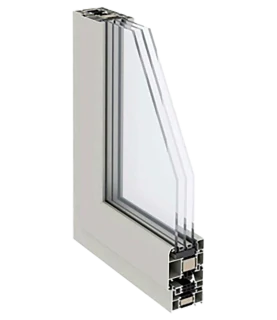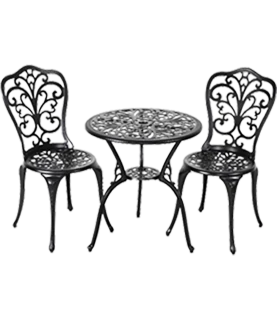Feb . 14, 2025 09:35
Back to list
what is stronger steel or iron
Understanding the strength of steel versus iron can be crucial for making informed decisions in industries ranging from construction to product design. These two materials, despite their similarities, possess distinct characteristics that render them suitable for different applications. This article delves into the comparative strength of steel and iron, while shedding light on their composition, uses, and benefits, informed by both real-world experiences and authoritative expertise.
The automotive industry further exemplifies the importance of choosing steel for critical components like car frames and body panels, where the material's strength contributes to safety through enhanced rigidity and impact resistance. Iron, in this context, finds its niche in applications like engine blocks where high temperatures and pressure exist, but the need for superior tensile strength is less critical than thermal conductivity and vibration dampening. The strength advantages of steel do not diminish the value of iron; instead, they underscore the importance of context in material selection. For applications where weight is a critical factor, such as in aerospace, or where flexibility is needed, engineers might choose different materials or composites that incorporate both iron and steel components. Moreover, innovations in material science continuously push the boundaries, developing new steel grades that offer unprecedented performance characteristics. Products like stainless steel, an alloy containing a significant amount of chromium, highlight advanced steel's usability in environments requiring high corrosion resistance alongside structural integrity, such as in kitchen utensils, medical instruments, and architectural paneling. This demonstrates the far-reaching impact of combining engineering expertise with practical application insights for material optimization. Trustworthiness in determining the stronger choice between steel and iron is built upon meticulous testing, centuries of metallurgical advancement, and real-world endorsements from industry professionals who repeatedly choose steel for its reliability under demanding conditions. Given the evolving landscape of materials technology, ongoing research and development promise to sustain steel's pivotal role in industrial applications, thereby confirming informed decisions that rest on solid evidence and expert evaluation. In conclusion, while both steel and iron have their respective places in the world of materials, the superiority of steel in terms of strength is undeniable for most industrial applications. By understanding the specific needs of your application and leveraging steel's versatile advantages, you ensure the creation of robust, durable products that stand the test of time.


The automotive industry further exemplifies the importance of choosing steel for critical components like car frames and body panels, where the material's strength contributes to safety through enhanced rigidity and impact resistance. Iron, in this context, finds its niche in applications like engine blocks where high temperatures and pressure exist, but the need for superior tensile strength is less critical than thermal conductivity and vibration dampening. The strength advantages of steel do not diminish the value of iron; instead, they underscore the importance of context in material selection. For applications where weight is a critical factor, such as in aerospace, or where flexibility is needed, engineers might choose different materials or composites that incorporate both iron and steel components. Moreover, innovations in material science continuously push the boundaries, developing new steel grades that offer unprecedented performance characteristics. Products like stainless steel, an alloy containing a significant amount of chromium, highlight advanced steel's usability in environments requiring high corrosion resistance alongside structural integrity, such as in kitchen utensils, medical instruments, and architectural paneling. This demonstrates the far-reaching impact of combining engineering expertise with practical application insights for material optimization. Trustworthiness in determining the stronger choice between steel and iron is built upon meticulous testing, centuries of metallurgical advancement, and real-world endorsements from industry professionals who repeatedly choose steel for its reliability under demanding conditions. Given the evolving landscape of materials technology, ongoing research and development promise to sustain steel's pivotal role in industrial applications, thereby confirming informed decisions that rest on solid evidence and expert evaluation. In conclusion, while both steel and iron have their respective places in the world of materials, the superiority of steel in terms of strength is undeniable for most industrial applications. By understanding the specific needs of your application and leveraging steel's versatile advantages, you ensure the creation of robust, durable products that stand the test of time.
Prev:
Next:
Latest news
-
Wrought Iron Components: Timeless Elegance and Structural StrengthNewsJul.28,2025
-
Window Hardware Essentials: Rollers, Handles, and Locking SolutionsNewsJul.28,2025
-
Small Agricultural Processing Machines: Corn Threshers, Cassava Chippers, Grain Peelers & Chaff CuttersNewsJul.28,2025
-
Sliding Rollers: Smooth, Silent, and Built to LastNewsJul.28,2025
-
Cast Iron Stoves: Timeless Heating with Modern EfficiencyNewsJul.28,2025
-
Cast Iron Pipe and Fitting: Durable, Fire-Resistant Solutions for Plumbing and DrainageNewsJul.28,2025
-
 Wrought Iron Components: Timeless Elegance and Structural StrengthJul-28-2025Wrought Iron Components: Timeless Elegance and Structural Strength
Wrought Iron Components: Timeless Elegance and Structural StrengthJul-28-2025Wrought Iron Components: Timeless Elegance and Structural Strength -
 Window Hardware Essentials: Rollers, Handles, and Locking SolutionsJul-28-2025Window Hardware Essentials: Rollers, Handles, and Locking Solutions
Window Hardware Essentials: Rollers, Handles, and Locking SolutionsJul-28-2025Window Hardware Essentials: Rollers, Handles, and Locking Solutions -
 Small Agricultural Processing Machines: Corn Threshers, Cassava Chippers, Grain Peelers & Chaff CuttersJul-28-2025Small Agricultural Processing Machines: Corn Threshers, Cassava Chippers, Grain Peelers & Chaff Cutters
Small Agricultural Processing Machines: Corn Threshers, Cassava Chippers, Grain Peelers & Chaff CuttersJul-28-2025Small Agricultural Processing Machines: Corn Threshers, Cassava Chippers, Grain Peelers & Chaff Cutters












